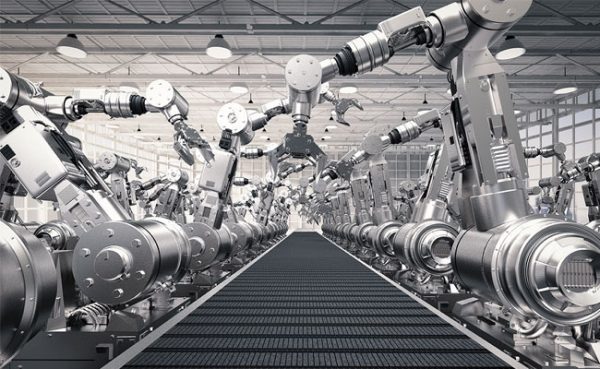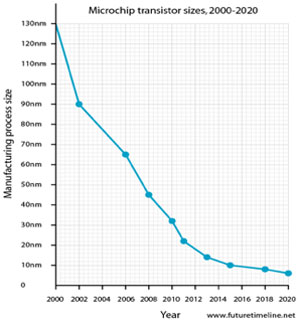Quick Contact Request
Please fill in information below and we will be in touch shortly.
The Robots Are Coming! The Robots Are Coming!
April 4, 2017 by Philip P. Thurman | News

In fact, robotic manufacturing has already been here for more than half a century and it’s a foregone conclusion that robotic manufacturing technology will only continue growing as a competitive edge, but not the competitive edge. Even with an established efficiency record, the utilization trend in Electronics Manufacturing Services (EMS) providers will exhibit a corollary increase to exponential technology advancement. Recent headlines have suggested a mixture of fearful reactions to the continuous robotic manufacturing influence (i.e., “Evidence that Robots are Winning the Race for American Jobs” – New York Times (C.C. Miller, 2017), “Robots Are Slashing U.S. Wages and Worsening Pay Inequality” – Bloomberg (J. Smialek, 2017), and “A New Study Tells Us How Many Jobs Are Lost by One Robot – Inc. (C. Than, 2017). Not only are domestic manufacturing employees fearing international outsourcing but technological obsolescence.
Business operations will always exist requiring human beings making decisions regardless of degree or pace of technological sophistication. Robotic manufacturing applications are neither “good” nor “bad” but a necessity to accommodate miniaturization and nanotechnology parallel advances. Most industry professionals are familiar with Moore’s Law, established by Intel co-founder Gordon Moore in 1965, who observed that the transistor quantity per square integrated circuit inch has doubled each year since first invented. Figure 1 below reflects a twenty year span of microchip transistor miniaturization:

Just as surface mount technology, originated in the late 1960s but did not reach prevalence until the 1980s, generated the eventual automated pick and place industry, current surface mount components smaller than 01005 size packages and lead pitches measured down to five thousands centers demand automation where human interaction is too subjective for measurable and repeatable results. Robotic necessity will force a similar dramatic restrategization. Every company possesses three primary intangible assets: information, human, and organizational. No matter the efficiency acceleration, waste reduction, or output consistency increase from robotic manufacturing expansion, human decisional authority will always remain the most critical component of any organization’s most powerful competitive edge – human assets shaped through internal culture.
During the infancy of surface mount package technology electronic assembly, companies with the latest associated manufacturing capabilities held a technical competitive edge over competition. During this technical development manufacturing period lasting approximately two decades, placement sophistication requirements advanced proportionate to package and lead miniaturization. Eventually, machine automated placement advancement leveled out where most of the industry attained relatively equal capability relative to market niche. Increased robotic intervention is positioning the electronics manufacturing market on a similar technological horizon. Like SMT placement, a development period will exist where companies in specific market niches most effectively utilizing robotic intervention will achieve a competitive edge. But, after a period where robotic intervention becomes as commonplace as SMT automation, true competition edge will return once again to what D. Leonard and W. Swap (2006) call Deep Smarts. Deep smarts are the most critical components of any organization’s competitive edge and this knowledge cannot be taught in a classroom setting, a technical instruction manual, or any other media substituting for real-life, actual performance of specific tasks. Top gun fighter pilots, musical virtuosos, or master machinists understand that this wisdom can only be transferred through the act of “doing”.
When evaluating an increased application of robotic technology in electronics manufacturing, psychological impacts must receive careful consideration. While straight efficiency may be an advantage, it cannot come as a result of disproportionate employee fear, empowerment sacrifice, or the dilution of relationships constructing corporate culture. An organization’s product or service quality is only as good as the providing employee quality sustained by the company’s culture. Bruce Jones, Senior Programming Director at the Disney Institute asserts “When employees treat one another well and with respect, they essentially provide one another exceptional service. And when they master how to provide exceptional service internally, they provide that same level of service externally, to customers and clients.” (B. Jones, 2017, para. 9). If employees perceive robotic manufacturing assistance as a potential threat, disengagement may result and human subjective quality output may decrease.
When George Devol, founder of Unimation, introduced the first industrial robot in 1954, the arrival generated rapidly increasing later generational improvements from Kawasaki Robotics’ original “Unimate” to Yaskawa’s “Motoman”. While large scale robotic assembly really transformed the automotive industry, robotic assembly has already permeated throughout the electronics manufacturing service industry and the degree of presence is relative to market niche, volume output, and performance expectation. Just last year, Foxconn Technology Group, the largest EMS in the world and manufacturer of Apple’s iPhone, recently reduced employees from 110,000 down to 50,000 at one factory alone (J. Wakefield, 2016). Management must remain cognizant to the potential employee psychological ramifications from increasing robotic involvement and the effect upon the cumulative Emotional Quotient of manager employee relationships. Managers must continually reiterate that the additional robotic efficiency is nothing more than tools to better utilize available resources and should be perceived as no more threatening to their contribution value than a hammer or screwdriver.
An obvious answer to the replacement of rote mechanical assembly functions is training. Executive management must recognize the need for resource investment in personnel training as technicians, engineers, or other more knowledge focused activity to support both hardware and systems. For those electronics contract manufacturers in low volume, basic design productivity, the need for robotic intervention is minimal although the corollary is a vanishing market niche relative to technological advancement. Midrange EMS providers must maintain a foot on either side of the technological fence and stay attuned to the pace of technology development driving robotic manufacturing assistance. If presently a large scale electronics contract manufacturing force, companies must already have or immediately invest in significant robotic manufacturing technology. Even with the ever increasing reality of robotic manufacturing advancements, if organizations do not maintain a careful focus on human assets constituting competitive edges and enabling continuing marketplace success, more value may be lost than gained.
Reference:
Fox, W. (2010). Moore’s Law. Retrieved from http://www.futuretimeline.net/subject/computers-internet.htm
Jones, B. (2017). Why Your Employees and Colleagues Might Be Your Most Important Customers. Retrieved March 15, 2017 from https://hbr.org/sponsored/2017/02/why-your-employees-and-colleagues-might-be-your-most-important-customers
Leonard, D., & Swap, W. (2004). Deep Smarts. Harvard Business Review, 82(9), 90.
Miller, C.C. (2017). Evidence That Robots Are Winning the Race for American Jobs. Retrieved from https://www.nytimes.com/2017/03/28/upshot/evidence-that-robots-are-winning-the-race-for- american-jobs.html?_r=0
Smialek, J. (2017). Robots Are Slashing U.S. Wages and Worsening Pay Inequality. Retrieved from https://www.bloomberg.com/news/articles/2017-03-28/robots-are-slashing-u-s-wages-and- worsening-pay-inequality
Than, C. (2017). A New Study Tells Us How Many Jobs Are Lost by One Robot. Retrieved from http://www.inc.com/cynthia-than/a-new-study-tells-us-how-many-human-jobs-are-lost-by-one- robot.html
Wakefield, J. (2016). Foxconn Replaces ‘60,000 factory workers with robots’. Retrieved from http://www.bbc.com/news/technology-36376966
Philip P. Thurman
Phil is currently the Quality Assurance Director for Quality Manufacturing Services, Inc. and has been a manufacturing quality assurance executive for 30 years with extensive experience in military power management systems, electronic manufacturing services, and quality systems applications. Receiving a BA in English from Stetson University and an MBA in Organizational Leadership from Norwich University, he is a published author and often consulted for electronic systems manufacturing development guidance. His extensive knowledge offers unique insights into industry trends, manufacturing advancements, and the continuing role of quality assurance evolution relative to technological progression.

